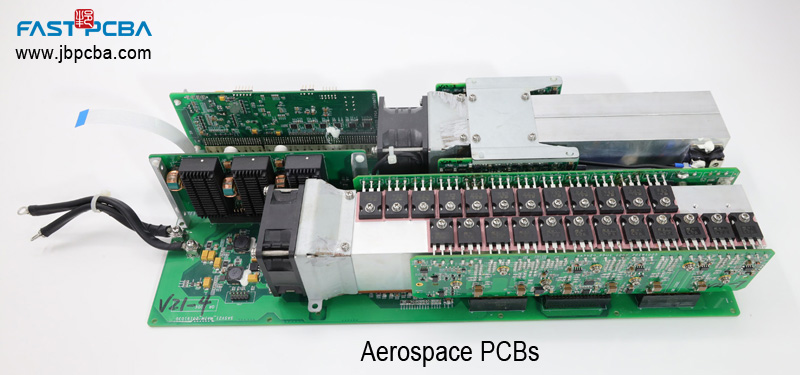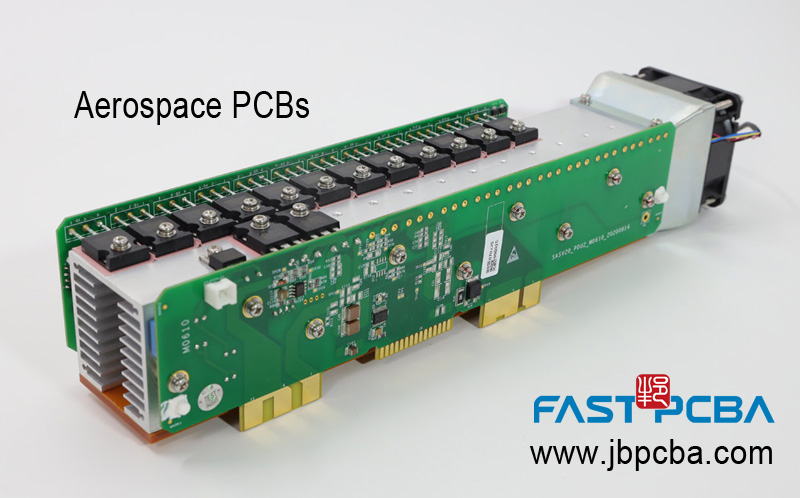About us
FASTPCBA Co.,Ltd
-
 Building 1, Senyang Electronic Technology Park, Guangming High-tech Park, Yutang Street, Guangming District, Shenzhen City.
Building 1, Senyang Electronic Technology Park, Guangming High-tech Park, Yutang Street, Guangming District, Shenzhen City.
-
 F:86-13418481618
F:86-13418481618
-
 pcba13@fastpcba.cn
pcba13@fastpcba.cn
 date:2020-10-30 10:13:52
date:2020-10-30 10:13:52
Due to the continuous increase in investment by various aerospace and aviation institutions around the world, the aviation and aerospace industry has achieved significant growth in the past few years. It is estimated that the number of aircraft carriers will double in the next two decades.
Especially the aviation industry will achieve significant growth in Asia-the Pacific. In addition, the widespread demand for pilot simulators will also drive industry growth. It is predicted that more than 900,000 pilots will be needed in the next 20 years to meet the growing demand. Passenger aircraft may be the most dynamic part of the aviation industry. This will drive the demand for aviation PCBs in the near future.
When we claim that Aerospace PCBs manufacturers will face their due challenges, it is expected that aviation and aerospace PCBs will provide higher technical performance at an affordable cost. These PCBs must withstand extreme environmental tolerances and provide higher reliability. Some PCB manufacturers are working to improve their manufacturing equipment and manufacturing expertise to meet the changing needs of the aviation and aerospace industries. In addition, the life expectancy of aviation and aerospace PCBs exceeds 10-15 years. These PCBs must be able to withstand harsh external conditions such as extreme temperature, humidity and vibration. In addition, harsh environmental conditions may occur, including salt spray, sand blowing, and solar radiation.
High reliability Aerospace Circuit Boards
Reliability is a key aspect of Aerospace Circuit Boards. PCB manufacturers almost expect to provide highly reliable products that can withstand harsh environmental conditions and operate without failure. High reliability PCBs are the first choice for aviation and aerospace applications, including satellites, aircraft carriers and space shuttles. Due to its mission-critical functions, it takes a lot of time to design high-reliability circuit boards. The key prospects of Aerospace PCBs include longevity and zero failure.
The reliability of PCB can be improved in the design and manufacturing process. However, using cutting-edge technology in the manufacturing process can improve performance.
Another major requirement of Aerospace PCBs is repeatability. To ensure 100% repeatability, each process is standardized by quantifying various elements (such as process control and measurement). In addition, multiple processes have been implemented, such as destructive physical analysis (DPA) and statistical process control (SPC) analysis, to ensure that no defects occur in the manufacturing and manufacturing processes.
Aviation and aerospace industry requirements
Aerospace and aerospace circuit boards should be able to withstand up to 2000 cycles from -40°C to 145°C (ordinary circuit boards can withstand 120°C -300 cycles) and retain up to 30 cycles at 570°F ( It is three times the requirement of the new lead-free T288 test.)
FASTPCBA's Aerospace PCBs not only improve customer profitability and competitiveness, but also provide the following benefits:
Improve thermal cycle reliability by more than 4 times.
Improve the reliability of assembly welding cycle by more than 3-4 times.
Tg is not important to the effect of HIER because copper through holes are now stronger than laminate expansion.
Does not affect any parameters, such as dielectric level, CAF capability, impedance or fine wire.
Extend low temperature availability to-
Extend the upper limit of usable temperature to above Tg.
Does not affect UL or military ratings.
Significantly improve the RAD grade nuclear hardening.
It has been extensively tested by FASTPCBA engineers and certified independent laboratories.


Industry standards for manufacturing PCB
Global PCB manufacturers are expected to follow certain industry standards to ensure better operational performance and higher PCB reliability to meet the requirements of aviation and aerospace applications. Some of these standards come from the International Organization for Standardization (ISO), which is generally recognized. Several QMS standards are by-products of the International Organization for Standardization (ISO) standards. For example, AS9100D provides a list of QMS requirements for suppliers in the aerospace industry. These standards focus on internal and outsourced manufacturing processes. In addition, AS9100D reiterates management responsibilities and emphasizes customer satisfaction.
Other standards such as IPC 6012DS focus on release requirements, minimum plating requirements, etc. The changing dynamics of the satellite industry have driven the demand for advanced standards beyond IPC Class 3A standards. The development of the J-STD-001 standard has raised some requirements for satellite PCBs. Obviously, some of these rules and regulations generally apply to PCB designers. These design rules are mandatory for factors such as process control, release and DPA.
For example, satellite PCBs have more miniature parts than conventional circuit boards. Therefore, it is important to follow certain standards according to customer requirements for high-end applications. In addition, these standards must be followed in the final process, including quality analysis, testing, reporting and microsection analysis. Due to the mission criticality associated with these applications, these processes are strictly implemented.
Specifications and regulations for manufacturing PCB
When we discussed Aerospace Circuit Boards and their challenges with PCB engineers, we concluded that due to the nature of the product application and external conditions, RoHS initiatives in aerospace and defense are irrelevant. For example, most of these Aerospace PCBs use lead-containing HASL, which is not preferred due to the environmental hazards it causes. Using any other material instead of lead-containing HASL will increase the risk factors associated with these PCBs. Switching to a different surface treatment will cause the temperature to rise, which brings potential risks.
FASTPCBA further pointed out that it is difficult to implement RoHS-type plans in the aviation and aerospace fields. However, the use of ENIG in the manufacturing process is becoming more and more popular. Suppliers give high priority to using leaded materials for assembly.
Future outlook
Advanced materials suitable for high-frequency applications will help manufacturers extend the service life of PCBs to 15-20 years. Currently, polyimide is widely used in geostationary satellites. However, low-orbit satellites with a lifetime of two to three years require advanced materials. Several materials such as Rogers are becoming more and more popular in space applications.
According to FASTPCBA analysis, the biggest challenge is to obtain electronic products from the ground to space. Developing high-end technologies and embedding these technologies in satellites is the focus of debate among PCB manufacturers. For those who pay attention to manufacturing, the future of aerospace PCBs is very bright!
 Building 1, Senyang Electronic Technology Park, Guangming High-tech Park, Yutang Street, Guangming District, Shenzhen City.
Building 1, Senyang Electronic Technology Park, Guangming High-tech Park, Yutang Street, Guangming District, Shenzhen City.
 F:86-13418481618
F:86-13418481618
 pcba13@fastpcba.cn
pcba13@fastpcba.cn